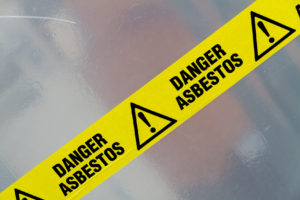 Asbestos can be found in any building built before the year 2000 (houses, factories, offices, schools, hospitals, etc) and causes around 5,000 deaths every year (more than the number of people killed on the road).
Asbestos can be found in any building built before the year 2000 (houses, factories, offices, schools, hospitals, etc) and causes around 5,000 deaths every year (more than the number of people killed on the road).
When materials that contain asbestos are disturbed or damaged, fibres are released into the air. When these fibres are inhaled they can cause serious diseases. These diseases will not affect you immediately; they often take a long time to develop, but once diagnosed, it is often too late to do anything. This is why it is important that you protect yourself now.
Asbestos can cause the following fatal and serious diseases:
Mesothelioma
Mesothelioma is a cancer which affects the lining of the lungs (pleura) and the lining surrounding the lower digestive tract (peritoneum). It is almost exclusively related to asbestos exposure and by the time it is diagnosed, it is almost always fatal.
Asbestos – related lung cancer
Asbestos-related lung cancer is the same as (looks the same as) lung cancer caused by smoking and other causes. It is estimated that there is around one lung cancer for every mesothelioma death.
Asbestosis
Asbestosis is a serious scarring condition of the lung that normally occurs after heavy exposure to asbestos over many years. This condition can cause progressive shortness of breath, and in severe cases can be fatal.
Pleural Thickening
Pleural thickening is generally a problem that happens after heavy asbestos exposure. The lining of the lung (pleura) thickens and swells. If this gets worse, the lung itself can be squeezed, and can cause shortness of breath and discomfort in the chest.
Employer Responsibilities
Every employer must make sure that anyone who is liable to disturb asbestos during their normal work, or who supervises those employees, gets the correct level of information, instruction and training so that they can work safely and competently without risk to themselves or others.
Employers have duties under the Control of Asbestos Regulations 2012 (CAW) to protect their employees from exposure to asbestos-containing materials, as they may cause harm to health.
Under the Regulations, employers are responsible for the health and safety of;
- Their employees
- Other employer’s employees
- Members of the public
- The self-employed
Employers must, under the Regulations;
- Provide information, instruction & training
- Carry out specific risk assessments
- Produce a written plan of work
- Ensure asbestos types are identified
- Prevent or reduce the exposure to asbestos
- Introduce control measures
- Maintain effective and control measures
- Keep records of any tests and examinations
- Provide suitable protective clothing
- Provide changing facilities & clean clothing
- Develop emergency procedures
- Prevent or reduce the spread of asbestos
- Clean equipment & premises after the exposure to asbestos
- Designate areas as ‘respirator zones’ or ‘asbestos areas’
- Display suitable hazard warning notices
- Arrange for effective air monitoring
- Keep records for 5 years, or if related to health surveillance for 40 years
- Provide health surveillance every 2 years to those exposed to asbestos
- Remove asbestos waste under special waste provision
Working on asbestos-containing materials
Asbestos fibres are more likely to be released if the following happens:
- Asbestos-containing materials are not identified before work starts.
- Work is poorly planned or badly carried out.
- You work on dry asbestos- containing materials.
- You use power tools or saws.
- You sweep up asbestos- containing debris.
Asbestos-containing materials may be left in place, as long as they do not and will not put anyone at risk of exposure to asbestos fibres.
Asbestos Check List
- Can you avoid disturbing asbestos by doing the job in some other way?
- Do you need a licence for the work?
- Always follow all legal requirements.
- Follow the task guidance sheet.
- Use an asbestos waste container.
- Dispose at a licensed disposal site.
Caution:
- Don’t sweep up dust or debris – use a Class H vacuum cleaner or damp rags
- Don’t take used overalls home.
- Don’t reuse disposable PPE.
- Don’t smoke.
- Don’t eat or drink in the work area.
For more information visit the HSE website.